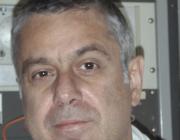Citation:
| 128_abstract.pdf | 365 KB |
Date Presented:
13 JuneAbstract:
Ten years after the occurrence of the Andravida earthquake (2008) several aspects were investigated, including its connection to neighboring spatiotemporal clusters in the following years. On 8 June 2008 at 12:25 GMT a large earthquake (Mw=6.4) occurred NE of Andravida (Greece) in an area characterized by relatively low seismicity. Nevertheless, it is worth noting that this major event was successfully predicted by a previous study, taking into account decelerating accelerating seismicity. Data recorded by the Unified Hellenic Seismological Network (HUSN)
were analyzed to study the aftershock sequence and local velocity structure. The modeling of teleseismic P, SV and SH waves provided well-constrained focal mechanism solutions of the mainshock and its major aftershocks with magnitude M > 3.4. The constrained fault plane solutions represent dextral strike slip type faulting. The spatial distribution of the aftershocks, as well as the calculation of the slip distribution and Local Earthquake Tomography (LET), provided evidence that the rupture plane is the one with NE-SW direction. Surface breaks were observed in
several sites but in most cases their direction was perpendicular to the rupture plane and can be characterized as secondary effects. The source process was characterized by unilateral rupture propagation towards the city of Patras, to the NE, where a seismic sequence was initiated after the Mw=3.9 event of the 27th December 2012 along the ENE-WSW Agia Triada normal fault.

